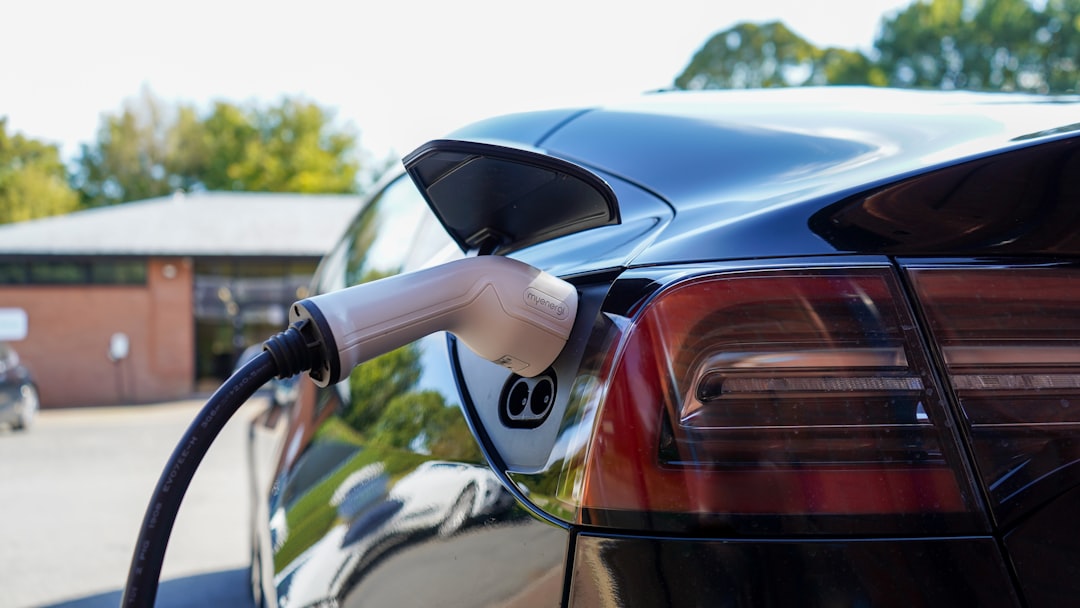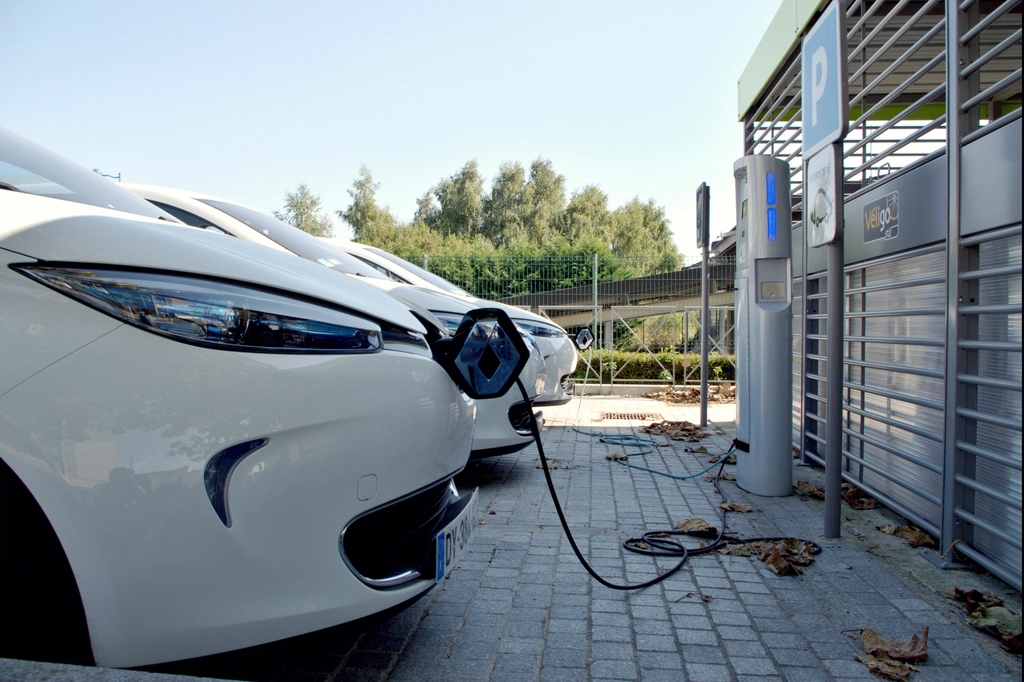Power Sources

Battery electric vehicles, commonly known as BEVs, use electricity from onboard battery packs for propulsion. Similar to charging your mobile device, these batteries get replenished when plugged into an external power supply.
This approach is simple and has become more popular because of the growing number of charging points available. In contrast, hydrogen vehicles, referred to as Fuel Cell Electric Vehicles (FCEVs), operate using hydrogen gas.
Hydrogen is kept in tanks and utilized in a fuel cell to produce electricity, which subsequently drives the vehicle's engine. Unlike electric vehicles (EVs), this method relies on a chemical reaction instead of storing electrical energy directly.
Energy Efficiency

In terms of energy efficiency, electric vehicles typically hold an advantage. They manage to transform approximately 60-80% of the electrical energy sourced from the grid into power delivered to the wheels.
One of the key factors contributing to electric vehicles being viewed as a promising answer for eco-friendly transport is their high efficiency level. Conversely, hydrogen cars operate with lower efficacy, transforming approximately 30-40% of the energy stored in hydrogen into wheel propulsion power.
The reduced efficiency primarily stems from energy losses during hydrogen production, transport, and its conversion to electricity. Nonetheless, these vehicles present other benefits that render them a compelling option as an alternative.
Refueling/Recharging Time

The time it takes to refuel or recharge is a significant consideration for vehicle owners. Electric car charging times can vary greatly depending on the type of charger used.
Rapid chargers can fill a battery up to 80% within approximately 30 minutes, making them an effective choice for brief pitstops during extended journeys. Nonetheless, typical household charging may require multiple hours, potentially posing challenges for individuals with stringent time constraints.
Compared to that, refilling a hydrogen vehicle takes roughly 3-5 minutes, which is as swift as topping off a conventional gas-powered car. This efficiency makes fuel cell electric vehicles (FCEVs) particularly advantageous for lengthy trips.
Range

The distance a vehicle can cover, or simply put, how far it can go on one full charge or tank of fuel, is vital information for motorists. Contemporary electric vehicles generally provide an operating range from about 150 to 400 miles with each charging session, varying based on the capacity of their batteries and specific models.
This range is constantly getting better thanks to advancements in battery tech. In contrast, hydrogen vehicles typically offer a range of 300-400 miles per refill, similar to numerous gas-powered automobiles.
This renders FCEVs an attractive option for individuals frequently covering extensive distances and requiring consistent range reliability.
Infrastructure

The availability of refueling or recharging infrastructure is crucial for the widespread acceptance and ease of use of such vehicles. Charging stations for electric cars have become much more prevalent and continue to grow quickly, benefiting from significant contributions from both governmental bodies and private sectors.
A significant advantage for many electric vehicle (EV) owners is the ability to charge their vehicles at home, enhancing convenience. Conversely, hydrogen fueling stations are fewer and far between, with most being located predominantly in areas such as California, Japan, and certain parts of Europe.
This restricted accessibility presents a hurdle for the broad acceptance of hydrogen cars.
Environmental Impact

The environmental effect of these vehicles primarily hinges on where their power comes from. In the case of electric cars, their emissions rely heavily on how the electricity used to charge them is produced.
When renewable energy sources such as wind or solar power the grid, the emissions are negligible. On the other hand, if the electricity originates from fossil fuels, the carbon footprint grows significantly.
Hydrogen-powered vehicles face their own distinct environmental hurdles. The process of producing hydrogen can be quite carbon-heavy, particularly when it involves extracting natural gas via steam methane reforming.
However, "green hydrogen," generated through electrolysis powered by renewable sources, can virtually eliminate emissions, providing a more environmentally friendly option.
Cost

Price is invariably an important aspect when making a purchase. Electric cars generally come with a higher upfront cost primarily because of the costly batteries.
Nevertheless, these expenses are reducing due to technological advancements and the impact of economies of scale. Moreover, electric vehicles typically exhibit lower operational and maintenance costs than those equipped with internal combustion engines.
On the contrary, hydrogen vehicles encounter greater expenses related to producing, storing, and building up the necessary infrastructure for hydrogen. Additionally, these vehicles come at a higher cost because of the intricate nature of their fuel cell systems.
Market Availability

The variety of models constitutes a crucial factor for buyers. Electric vehicles come with an extensive array of options, addressing various requirements and price points, including high-end luxuries as well as mid-tier and affordable choices.
The diversity allows customers to discover an electric vehicle that matches their way of life more easily. Conversely, there are limited options when it comes to hydrogen-powered cars in the marketplace.
Companies such as Toyota, with its Mirai model, Honda with the Clarity Fuel Cell, and Hyundai with the Nexo, are some of the leading producers of FCEVs.
Technology Maturity

The development stage of the tech supporting these vehicles greatly influences how well they perform and function reliably. Over time, battery tech for electric cars has advanced considerably, showing steady enhancements in energy density, quicker recharge times, and reduced costs.
This advancement has rendered electric vehicles a feasible and appealing choice for numerous consumers. In contrast, hydrogen fuel cell technology remains under development.
Experts are striving to boost efficiency, cut expenses, and enhance the longevity of fuel cell systems; however, it could be some time before these improvements become available commercially.
Energy Storage

In conclusion, the techniques for energy storage in these vehicles deserve mention. Electric cars utilize lithium-ion batteries, which are advancing in regards to capacity, weight, and cost.
Nevertheless, the manufacturing of these batteries necessitates scarce materials like lithium, cobalt, and nickel, presenting challenges related to both resource scarcity and ecological consequences. In contrast, hydrogen vehicles keep hydrogen stored in tanks under high pressure.
Although hydrogen is plentifully present, the methods used for extracting and storing it require significant amounts of energy, potentially diminishing some of the ecological advantages.
What are your views on this subject? Please share your opinions in the section below—We're eager to get feedback from you! Would you like to read similar articles? Stay connected with us to ensure you never miss an update!